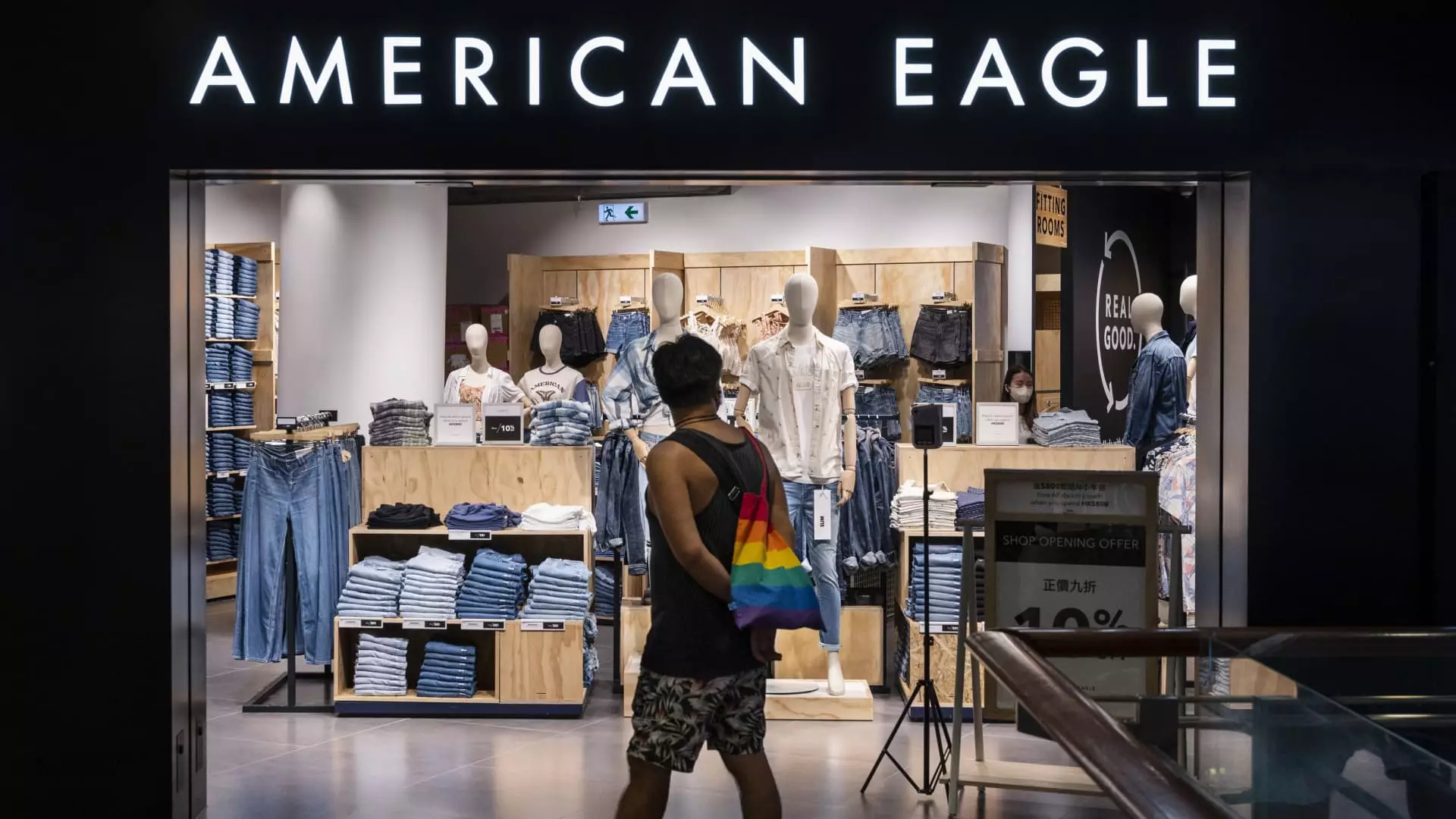American Eagle Outfitters (AEO) has recently found itself in hot waters, announcing disappointing quarterly earnings that fell short of market expectations. The retail landscape is evolving, and AEO’s performance serves as a cautionary tale for others in the industry. A staggering $75 million write-off in spring and summer merchandise due to misguided merchandising strategies signals not just a momentary setback, but broader systemic issues that could redefine how the company approaches its business.
The Reality Check of Earnings Reports
Much like other retailers, AEO’s latest earnings announcement was accompanied by a sense of resignation that permeated the air of Wall Street. At the heart of this turmoil were several key figures—most unsettling was a reported loss of adjusted earnings per share that settled at 29 cents, compared to analysts’ expectation of a mere 22 cents loss. This new financial reality starkly contrasts with prior forecasts, which had anticipated a profitable turnaround with earnings projected at an 11-cent profit before the announcement. It raises critical questions: how did AEO misstep in their market predictions, and more importantly, can they recalibrate their strategies before further losses ensue?
Understanding the Context of Retail Struggles
The retail industry at large is rife with challenges, exacerbated by inflation, supply chain hurdles, and shifting consumer behavior. AEO has voiced awareness of these problems, but how effectively are they responding? While the company had pre-announced softer numbers two weeks prior, investing stakeholders remain skeptical amid persistent macroeconomic uncertainty. The reality remains stark: sales dropped to $1.09 billion, down from $1.14 billion in the same quarter last year, leaving little room for optimism. The apparel giant’s strategy to pull its full-year guidance illicit refers not only to existential struggles but an underestimation of market volatility—a pattern familiar to several brands facing today’s climate.
Leadership’s Accountability and Vision
CEO Jay Schottenstein’s disappointment over the first-quarter results resonates across the organization, and words alone may no longer suffice. His call to action—an effort to “better position the company”—won’t win over a skittish investor base without tangible results. Jennifer Foyle, president and executive creative director, admitted that “some of our big fashion ideas for the season simply did not resonate with our customer.” This frank honesty is refreshing but underscores a critical failure: the disconnect between product development and consumer insights.
As the company pivotally seeks to align its offerings with customer desires, it is equally vital that it assesses how to innovate within a saturated market. The mention of “a cool spring” impacting sales feels like a misplaced excuse rather than a sound business strategy. Adjusting product offerings based on evolving trends should be standard operating procedure, not an afterthought.
Navigating Through Tariff Turmoil
Compounding these issues is the shadow of trade policies, particularly with China, dictating AEO’s strategic direction. CFO Michael Mathias suggested an ongoing reduction in sourcing from China, demonstrating awareness of the significant tariff implications affecting the bottom line. However, reducing dependence on Chinese manufacturing is not a panacea. It opens discussions about the broader implications for sustainability, pricing strategies, and ethical sourcing—a line AEO must carefully walk to align with increasingly enlightened consumer expectations.
The company’s revelations about tariffs translating to a $40 million impact on the annual budget invoke the critical question: Is AEO fully prepared for the potential repercussions as it navigates these tumultuous waters? Stakeholders need assurance, not merely projections, about how strategy alterations will mitigate these financial obstacles.
Where Do We Go From Here?
Looking ahead, AEO must focus not only on immediate adjustments but on long-term brand resilience. The company plans to complete its $200 million accelerated share repurchase program, but financial engineering alone cannot mask the underlying challenges. The back-to-school season looms ahead, posing a chance for redemption or further decline. AEO must utilize this time to connect with its youthful base, leveraging social media and innovative marketing strategies to ignite a resurgence of brand loyalty among teenage consumers.
With their stock plummeting approximately 33% year-to-date, AEO is at a critical juncture. If the brand hopes to navigate through these uncharted waters, it requires an overhaul that marries consumer empathy with forward-thinking strategies. The question now is not whether AEO can rise from the ashes but how effectively it can entrench itself back into the hearts and wallets of its primary demographic. The retail landscape may be unforgiving, but it isn’t irrevocable—unless, of course, brands like AEO fail to seize the moment.

